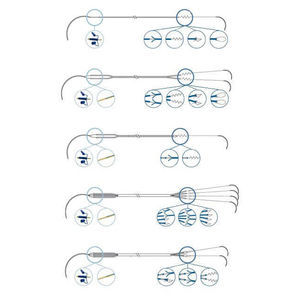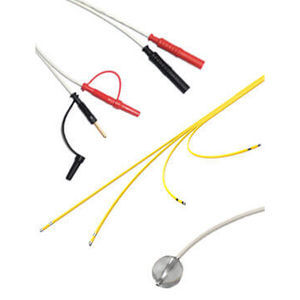
- Secondary care
- Cardiology
- Temporary cardiac stimulator
- Osypka Medical

- Products
- Catalogs
- News & Trends
- Exhibitions
Dual-chamber temporary cardiac stimulator PACE® 203

Add to favorites
Compare this product
fo_shop_gate_exact_title
Characteristics
- Diagnosis
- dual-chamber
- Pulse rate (ppm)
Max.: 220 unit
Min.: 30 unit
- Delivered amplitude (V)
Max.: 18 V
Min.: 0.1 V
Description
PACE® Model 203 is quintessence of more than 35 years expertise in designing temporary cardiac pacemakers.
We learned from the best – our customers – when thinking of, and implementing, several features, having in mind that simplifying the operation increases safety and efficacy in pacing therapy as well as the comfort level of the user.
PACE® Model 203 helps in assessing the quality of a stimulation circuit, or trouble-shoot if needed:
Monitoring of impedance is an objective measure of the electrical properties of the stimulation circuit, i.e., extension cables, pacing leads and heart tissue.
Reasonable low capture threshold is indicative of good contact between pacing leads and heart tissue.
Reasonable high P/R Wave amplitude is indicative of good location of pacing lead.
Very low impedance, caused, for instance, by unipolar pacing wires featuring long, exposed surface areas or placed in proximity, may exceed the specified load range of the pacemaker (all pacemakers, no matter which brand, are specified for a load between 200 Ohms and at least 1,000 Ohms).
The measured value for impedance is displayed any time the atrial or ventricular dial for the stimulation output is turned (even when device is locked!).
With the quality of the stimulation circuit assured by a proper impedance, the following challenges in temporary pacing remain, for each pacemaker channel:
Determination of the capture threshold (a property of the patient’s heart) – ensuring effective stimulation (depolarization) by applying a stimulation output 2-3 times the capture threshold.
VIDEO
Catalogs
PACE-203 Brochure
2 Pages
Non-invasive Cardiac Output
6 Pages
Related Searches
- Multiparameter monitor
- Oxygen multi-parameter monitor
- SpO2 multiparameter monitor
- ECG multiparameter monitor
- Compact multiparameter monitor
- NIBP multiparameter monitor
- Intensive care multiparameter monitor
- Portable multiparameter monitor
- Continuous multiparameter monitor
- High-resolution multiparameter monitor
- Non-invasive multi-parameter monitor
- Cardiac output multiparameter monitor
- Hemodynamic monitor
- Pressure multi-parameter monitor
- Temporary cardiac stimulator
- Pacemaker programming unit
- Cardiac output monitor
- Non-invasive cardiac output monitor
- Blood flow multi-parameter monitor
*Prices are pre-tax. They exclude delivery charges and customs duties and do not include additional charges for installation or activation options. Prices are indicative only and may vary by country, with changes to the cost of raw materials and exchange rates.






